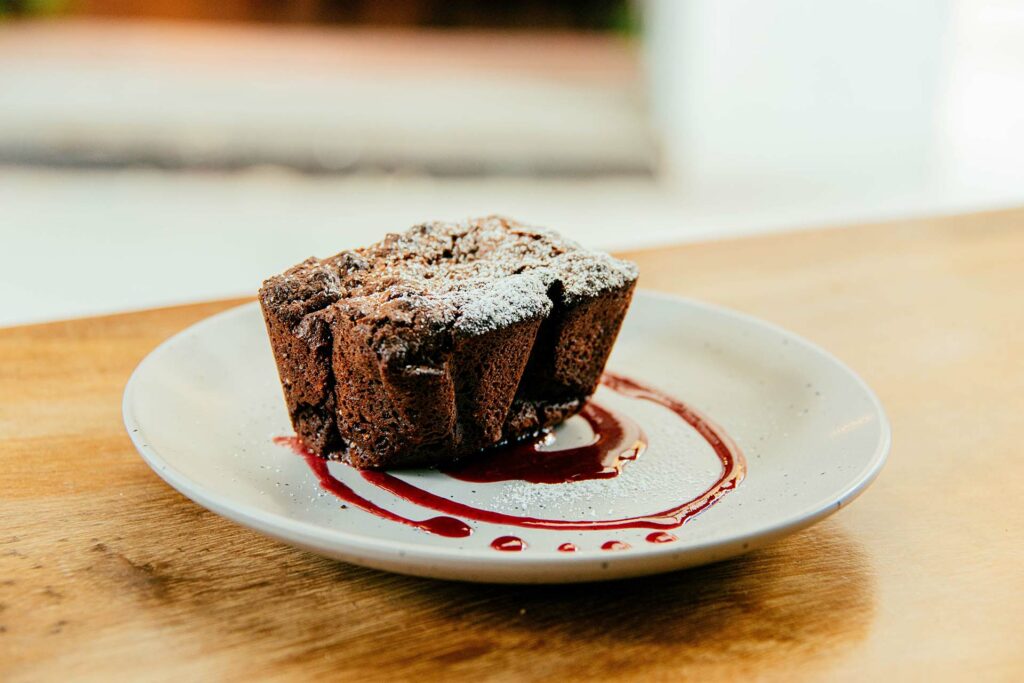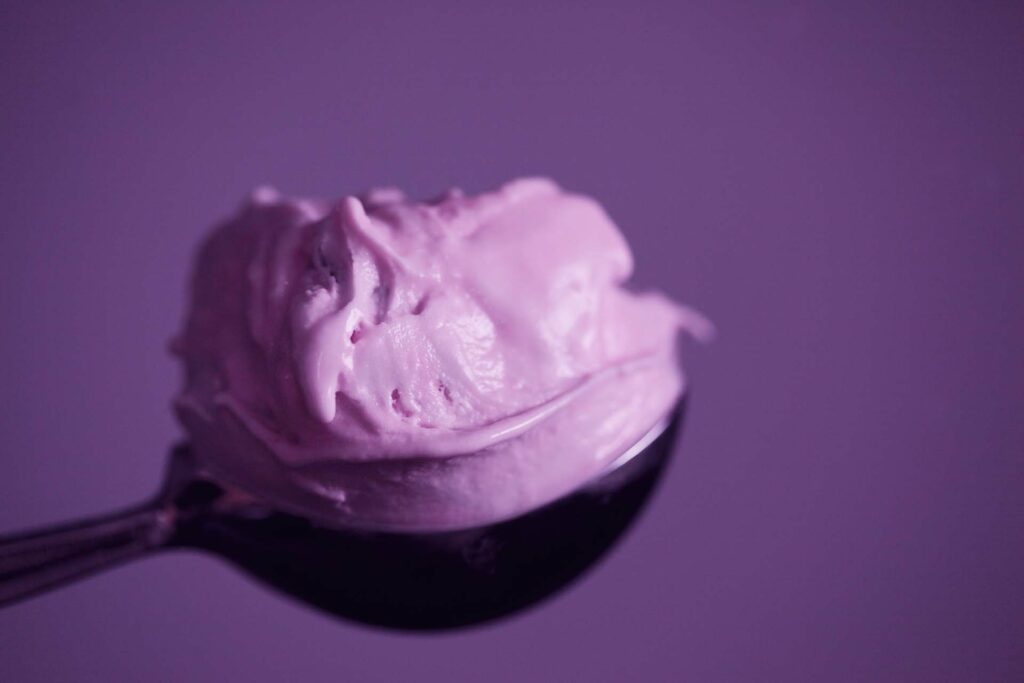When it comes to creating delicious and visually appealing recipes, xanthan gum has long been a trusted ingredient in the culinary world. This versatile additive is widely used as a thickening, stabilizing, and emulsifying agent, adding texture and improving the overall quality of various food products. However, for those with dietary restrictions, allergies, or simply a desire to explore different options, finding suitable xanthan gum substitutes becomes essential.
In this comprehensive blog post, we will delve into the realm of xanthan gum substitutes, exploring both natural and synthetic alternatives that can be used to achieve similar results in your recipes. Whether you’re looking for gluten-free alternatives, plant-based options, or simply want to experiment with new ingredients, this guide will provide you with a wealth of information and practical tips to successfully substitute xanthan gum in your culinary creations.
What is Xanthan Gum?
Xanthan gum is a hydrocolloid, meaning it forms a gel-like substance when combined with water. It is produced by a specific strain of bacteria known as Xanthomonas campestris and is then processed into a fine powder. This powder is soluble in both cold and hot water, making it highly versatile and easy to incorporate into various recipes.
Common Applications of Xanthan Gum
Xanthan gum finds widespread use in the food industry due to its functional properties. Some common applications include:
1. Thickening Agent
Xanthan gum acts as an effective thickening agent, providing a smooth and consistent texture to sauces, soups, and gravies. It helps prevent liquids from separating and creates a desirable mouthfeel.
2. Stabilizer
In many food products, xanthan gum acts as a stabilizer, preventing the separation of ingredients and ensuring a homogeneous mixture. It helps maintain the desired consistency and extends the shelf life of products like salad dressings, mayonnaise, and dairy-based desserts.
3. Emulsifier
As an emulsifier, xanthan gum helps blend oil and water-based ingredients, creating a stable emulsion. This property is particularly useful in salad dressings, where it prevents the oil and vinegar from separating.
4. Gluten-Free Baking
Xanthan gum plays a crucial role in gluten-free baking, where it acts as a binder and provides structure to doughs and batters. It compensates for the absence of gluten, giving gluten-free bread, cakes, and cookies a more desirable texture.
Why Would Someone Need a Xanthan Gum Substitute?
While xanthan gum offers numerous benefits in food preparation, there are several reasons why someone may seek alternatives:
1. Allergies and Sensitivities
Some individuals may have allergies or sensitivities to xanthan gum, resulting in adverse reactions such as digestive issues, skin irritations, or respiratory problems. For those individuals, finding suitable substitutes becomes essential to avoid any discomfort or allergic reactions.
2. Dietary Restrictions
People following specific dietary restrictions, such as a gluten-free, vegan, or paleo diet, may choose to avoid xanthan gum. These individuals seek alternative ingredients that align with their dietary choices while still providing the desired texture and stability in their recipes.
3. Personal Preference
Some individuals simply prefer to explore different options and experiment with alternative ingredients in their cooking and baking. Whether it’s a desire to try new ingredients or a curiosity to create unique flavors, finding xanthan gum substitutes allows for culinary creativity and innovation.
Understanding Xanthan Gum and the Need for Substitutes
Before we embark on our journey to explore xanthan gum substitutes, let’s first understand what xanthan gum is and why finding alternatives is necessary. Xanthan gum is a polysaccharide produced through the fermentation of bacteria with sugar. Its unique properties make it a popular choice in the food industry, where it is used as a thickening agent in sauces, dressings, and bakery products, as well as a stabilizer in ice creams and beverages.
However, there are several reasons why individuals may seek xanthan gum substitutes. Some people have allergies or sensitivities to xanthan gum, while others prefer to avoid it due to its synthetic nature. Additionally, those following specific dietary restrictions, such as a gluten-free or vegan diet, may need alternatives that align with their lifestyle choices. Whatever the reason, rest assured that there are numerous options available to help you achieve the desired results in your recipes without compromising on taste or texture.
Exploring Xanthan Gum Substitutes
In our quest to find suitable xanthan gum substitutes, we will explore both natural and synthetic alternatives. Natural substitutes provide a healthier and more wholesome option, often derived from plant-based sources that offer similar viscosity and binding properties. On the other hand, synthetic substitutes offer stability and functionality, providing a reliable alternative for specific applications. Let’s dive deeper into each category to understand the various options available and how to best utilize them in your culinary endeavors.
Natural Xanthan Gum Substitutes
In our quest for xanthan gum substitutes, natural alternatives offer a wholesome and nutrient-rich option. These substitutes, derived from plant-based sources, not only provide similar functional properties to xanthan gum but also offer additional health benefits. In this section, we will explore three prominent natural substitutes: chia seeds, psyllium husk, and agar agar.
Chia Seeds
Chia seeds have gained popularity in recent years due to their nutritional value and versatility in the kitchen. These tiny seeds are packed with omega-3 fatty acids, fiber, protein, and various essential minerals. Beyond their nutritional benefits, chia seeds can also be used as a xanthan gum substitute in many recipes.
Properties and Benefits of Chia Seeds in Recipes
Chia seeds have hydrophilic properties, which means they can absorb and hold a significant amount of liquid. When mixed with water or other liquids, chia seeds form a gel-like substance due to the release of soluble fiber. This gel-like consistency makes chia seeds an excellent thickening agent and binder, similar to xanthan gum.
In addition to their thickening properties, chia seeds also provide nutritional benefits. They are rich in soluble fiber, which aids in digestion and helps regulate blood sugar levels. The omega-3 fatty acids present in chia seeds offer anti-inflammatory properties and support heart health.
Using Chia Seeds as a Binding Agent in Various Dishes
One of the primary functions of xanthan gum is to act as a binding agent in recipes, particularly in gluten-free baking. Chia seeds can effectively fulfill this role, providing structure and stability to baked goods such as bread, muffins, and cookies.
To use chia seeds as a xanthan gum substitute, you can create a chia gel by combining chia seeds and water in a 1:3 ratio. Allow the mixture to sit for a few minutes until it forms a gel-like consistency. This chia gel can then be incorporated into your recipes, replacing xanthan gum.
Recipes and Guidelines for Substituting Xanthan Gum with Chia Seeds
- Gluten-Free Chia Seed Bread: Replace xanthan gum with chia gel in your favorite gluten-free bread recipe. The chia gel will help bind the ingredients together and provide structure to the bread.
- Chia Seed Pudding: Create a delicious and nutritious chia seed pudding by combining chia seeds, your choice of milk, sweetener, and flavorings. Allow the mixture to sit overnight in the refrigerator, and the chia seeds will absorb the liquid and create a thick, pudding-like consistency.
- Chia Seed Smoothie: Add a spoonful of chia seeds to your favorite smoothie recipe for an extra boost of fiber and omega-3 fatty acids. The chia seeds will also help thicken the smoothie and provide a satisfying texture.
When using chia seeds as a xanthan gum substitute, it is important to note that they can absorb a significant amount of liquid. Adjusting the liquid ratios in your recipes may be necessary to achieve the desired consistency.
Chia seeds offer a natural and nutritious alternative to xanthan gum, providing both functional and health benefits. Experiment with chia seeds in your recipes and enjoy the added texture, nutritional value, and versatility they bring to your culinary creations.
Psyllium Husk: A Versatile Xanthan Gum Substitute
Psyllium husk, derived from the seeds of the Plantago ovata plant, is another natural alternative to xanthan gum that has gained recognition in the culinary world. This dietary fiber powerhouse offers unique properties that make it an excellent substitute in various recipes, especially in gluten-free baking.
Understanding the Unique Characteristics of Psyllium Husk
Psyllium husk is rich in soluble fiber, which gives it its remarkable binding and thickening properties. When combined with liquid, psyllium husk absorbs the moisture and forms a gel-like substance. This gel provides structure and stability to doughs and batters, making it an ideal replacement for xanthan gum in gluten-free recipes.
One of the notable advantages of psyllium husk as a xanthan gum substitute is its ability to mimic the elasticity and texture that gluten provides in traditional baking. This makes it particularly valuable in gluten-free bread and pastry recipes, where achieving a similar texture can be challenging.
Utilizing Psyllium Husk in Gluten-Free Baking and Cooking
Psyllium husk can be incorporated into gluten-free recipes to add structure and improve the texture of the final product. Here are some practical tips for using psyllium husk as a xanthan gum substitute:
1. Understanding the Ratios
To use psyllium husk as a xanthan gum substitute, you will typically need to add it to your recipe in a specific ratio. A common guideline is to use about 1 to 2 teaspoons of psyllium husk per cup of gluten-free flour. However, it’s important to follow the specific instructions of your recipe and adjust the amount of psyllium husk accordingly.
2. Hydration is Key
Psyllium husk requires adequate hydration to reach its full potential as a xanthan gum substitute. It is crucial to combine psyllium husk with sufficient liquid, usually water, and allow it to sit for a few minutes to absorb the moisture and form a gel. This gel will provide the necessary binding properties in your recipe.
3. Gradual Incorporation
When using psyllium husk in recipes, it’s best to gradually incorporate it into the mixture. This allows the psyllium husk to evenly distribute and hydrate, preventing clumps and ensuring a consistent texture throughout the final product.
Recipes and Tips for Substituting Xanthan Gum with Psyllium Husk
- Gluten-Free Sandwich Bread: Replace xanthan gum with psyllium husk in your favorite gluten-free bread recipe. The psyllium husk will help bind the ingredients together and create a bread with a satisfying texture and structure.
- Gluten-Free Pizza Crust: Use psyllium husk as a xanthan gum substitute in your gluten-free pizza crust recipe. It will contribute to the dough’s elasticity, making it easier to stretch and shape while providing a chewy texture.
- Gluten-Free Muffins: Add psyllium husk to your gluten-free muffin batter to enhance the structure and texture. The psyllium husk gel will help hold the ingredients together, resulting in moist and tender muffins.
Remember that psyllium husk absorbs a significant amount of liquid, so it’s essential to adjust the liquid ratios in your recipes accordingly. Additionally, psyllium husk can vary in its absorbency, so it may require some experimentation to find the perfect ratio for your specific recipes.
Psyllium husk offers an excellent natural alternative to xanthan gum, particularly in gluten-free baking. Its binding properties and ability to mimic gluten make it a valuable ingredient for those seeking a xanthan gum substitute that provides structure and texture to their gluten-free creations. Experiment with psyllium husk in your recipes and enjoy the benefits it brings to your gluten-free baking and cooking endeavors.
Agar Agar: A Plant-Based Xanthan Gum Substitute
Agar agar, derived from seaweed, is a versatile and plant-based alternative to xanthan gum. This natural gelling agent offers excellent thickening properties and is widely used in various culinary applications. Whether you’re looking for a vegan option or simply want to explore different ingredients, agar agar can be a valuable addition to your pantry.
Exploring the Gelling Properties of Agar Agar
Agar agar is derived from red algae and is commonly used as a vegetarian and vegan alternative to gelatin. It has exceptional gelling capabilities, allowing it to create a firm and stable gel when combined with liquid. Unlike xanthan gum, which forms a gel-like substance, agar agar sets into a solid form, making it ideal for creating jellies, custards, and other gel-based desserts.
The gelling properties of agar agar make it a versatile ingredient in the culinary world. Its ability to create a stable gel at a wide range of temperatures, including room temperature, sets it apart from many other gelling agents.
Incorporating Agar Agar in Vegan and Vegetarian Recipes
Agar agar is a popular ingredient in vegan and vegetarian cooking due to its plant-based nature. It can be used as a xanthan gum substitute in various recipes, providing both thickening and gelling properties. Here are some practical tips for using agar agar in your culinary creations:
1. Understanding Agar Agar Powder and Flakes
Agar agar is available in powder or flake form. Agar agar powder is more potent and sets faster, while agar agar flakes require longer cooking times to dissolve and set properly. Adjusting the amount of agar agar and the cooking time may be necessary depending on the form you choose.
2. Dissolving Agar Agar
To incorporate agar agar into your recipes, it needs to be dissolved in liquid. This typically involves heating the liquid and agar agar together until the agar agar completely dissolves. It’s important to follow the specific instructions provided on the packaging, as the ratio of agar agar to liquid can vary.
3. Setting Temperature
Agar agar requires cooling to set properly. It sets around 35-40°C (95-104°F), which is significantly lower than the setting temperature of gelatin. This property makes agar agar suitable for creating chilled desserts and jellies.
Step-by-Step Instructions for Replacing Xanthan Gum with Agar Agar
- Vegan Panna Cotta: Create a silky smooth vegan panna cotta by substituting xanthan gum with agar agar. Dissolve agar agar in a mixture of plant-based milk, sweetener, and flavorings, then allow it to set in the refrigerator. Enjoy a delightful plant-based dessert with a perfect texture.
- Fruit Jelly: Use agar agar to create a vibrant and refreshing fruit jelly. Dissolve agar agar in fruit juice, sweeten if desired, and pour the mixture into molds or glasses. Let it set in the refrigerator, and you’ll have a beautiful fruit jelly with a delightful texture.
- Agar Agar Thickened Sauces: Agar agar can be used to thicken sauces and gravies. Dissolve agar agar in the desired liquid, heat until it thickens, and then incorporate it into your sauce or gravy. This method provides a stable and consistent thickening effect.
Agar agar offers a unique texture and gelling properties that can enhance your culinary creations. Whether you’re looking to create vegan desserts or add thickness to your sauces, agar agar serves as an excellent xanthan gum substitute. Experiment with agar agar in your recipes and unlock the possibilities it brings to your plant-based and vegetarian cooking adventures.
Synthetic Xanthan Gum Substitutes
While natural alternatives offer a wholesome option, synthetic substitutes also play a significant role in replacing xanthan gum in various applications. These synthetic alternatives provide stability, functionality, and versatility, making them valuable additives in the food industry. In this section, we will explore three commonly used synthetic substitutes for xanthan gum: guar gum, locust bean gum, and methyl cellulose.
Guar Gum
Guar gum is a widely used synthetic substitute for xanthan gum, derived from the guar bean. It is a white, powdery substance that offers excellent thickening and stabilizing properties. Guar gum is a soluble fiber that forms a gel-like consistency when combined with liquid, providing viscosity and enhancing the texture of various food products.
Properties and Functionality of Guar Gum in Recipes
Guar gum acts as a thickening agent, improving the texture and mouthfeel of sauces, dressings, and other liquid-based recipes. It provides a smooth and creamy consistency, preventing the separation of ingredients and creating a desirable texture. Guar gum is also effective in preventing ice crystal formation in frozen desserts, contributing to a smoother and creamier texture.
Using Guar Gum as a Xanthan Gum Substitute
To replace xanthan gum with guar gum, it is essential to understand the appropriate ratios and usage guidelines. Guar gum is highly effective at lower concentrations compared to xanthan gum, so it is recommended to use it in smaller quantities. It is advisable to start with a smaller amount and gradually increase if necessary, as excessive use of guar gum may result in a slimy or gummy texture.
Recipes and Guidelines for Substituting Xanthan Gum with Guar Gum
- Creamy Salad Dressing: Create a creamy salad dressing by substituting xanthan gum with guar gum. Combine guar gum with the liquid ingredients and blend until smooth. The guar gum will thicken the dressing, providing a luscious and velvety texture.
- Gluten-Free Gravy: Use guar gum as a xanthan gum substitute in gluten-free gravy recipes. Dissolve guar gum in a small amount of liquid, then gradually incorporate it into the gravy, stirring continuously. The guar gum will thicken the gravy and provide a smooth consistency.
- Guar Gum Ice Cream: Enhance the texture of homemade ice cream by substituting xanthan gum with guar gum. Dissolve guar gum in the liquid base of the ice cream, ensuring even distribution. The guar gum will help prevent ice crystallization and create a creamy and indulgent ice cream.
Guar gum offers a reliable and cost-effective alternative to xanthan gum, providing stability and thickening properties in various recipes. Experiment with guar gum in your cooking and baking endeavors to achieve the desired texture and consistency in your culinary creations.
Locust Bean Gum
Locust bean gum, also known as carob gum, is another commonly used synthetic substitute for xanthan gum. It is derived from the seeds of the carob tree and offers similar thickening and stabilizing properties. Locust bean gum is a galactomannan, a type of polysaccharide that forms a gel-like substance when combined with liquid.
Understanding the Properties and Benefits of Locust Bean Gum
Locust bean gum acts as a thickening and stabilizing agent, improving the texture and mouthfeel of various food products. It provides viscosity and enhances the stability of sauces, dressings, and dairy-based products. Locust bean gum also contributes to the creaminess and smoothness of ice creams and frozen desserts, preventing ice crystal formation and maintaining a desirable texture.
Incorporating Locust Bean Gum in Gluten-Free and Dairy-Free Recipes
Locust bean gum is particularly useful in gluten-free and dairy-free recipes, where it helps mimic the structure and texture provided by xanthan gum. It provides stability and enhances the binding properties, ensuring that gluten-free and dairy-free baked goods maintain their shape and structure.
Step-by-Step Instructions for Replacing Xanthan Gum with Locust Bean Gum
- Gluten-Free Bread: Replace xanthan gum with locust bean gum in your gluten-free bread recipe. Dissolve locust bean gum in a small amount of liquid, then incorporate it into the dough. The locust bean gum will help bind the ingredients together, resulting in a well-structured gluten-free bread.
- Dairy-Free Ice Cream: Use locust bean gum as a xanthan gum substitute in dairy-free ice cream recipes. Dissolve locust bean gum in the liquid base of the ice cream, ensuring even distribution. The locust bean gum will contribute to a creamy and smooth texture, preventing ice crystallization.
- Sauces and Dressings: Incorporate locust bean gum into sauces and dressings as a thickening and stabilizing agent. Dissolve locust bean gum in the liquid base of the sauce or dressing, then heat gently to activate its thickening properties. The locust bean gum will enhance the texture and prevent separation.
Locust bean gum offers a reliable and functional alternative to xanthan gum, particularly in gluten-free and dairy-free recipes. Experiment with locust bean gum in your culinary creations to achieve optimal texture and stability, ensuring delicious results.
Methyl Cellulose
Methyl cellulose is a synthetic alternative to xanthan gum that provides excellent thickening and gelling properties. It is derived from cellulose, a plant-based fiber, and is widely used in various food applications. Methyl cellulose is unique in that it forms a gel-like substance when hydrated, but unlike xanthan gum, it retains its gel structure even when heated.
Overview of the Properties and Uses of Methyl Cellulose
Methyl cellulose is a versatile ingredient that offers stability, texture enhancement, and emulsification properties. It is commonly used in vegan and gluten-free recipes, where it acts as a binder and provides structure to baked goods, sauces, and dressings. Methyl cellulose is also frequently used in molecular gastronomy techniques, as it can create heat-resistant gels and stable foams.
Applying Methyl Cellulose in Vegan and Gluten-Free Cooking
Methyl cellulose is particularly beneficial in vegan and gluten-free cooking, as it helps create stable structures and improve the texture of plant-based and gluten-free recipes. It provides stability and enhances the binding properties, resulting in baked goods with a desirable texture and structure.
Recipes and Tips for Substituting Xanthan Gum with Methyl Cellulose
- Vegan Burgers: Use methyl cellulose as a xanthan gum substitute in vegan burger recipes. Add methyl cellulose to the burger mixture to improve the binding and texture. The methyl cellulose will help the burger maintain its shape and provide a satisfying bite.
- Gluten-Free Baking: Incorporate methyl cellulose into gluten-free baking recipes such as bread, cakes, and cookies. It will contribute to the structure and texture of the baked goods, ensuring a pleasant eating experience.
- Molecular Gastronomy Techniques: Explore the possibilities of methyl cellulose in molecular gastronomy techniques. It can be used to create heat-resistant gels, stable foams, and other innovative culinary creations.
When using methyl cellulose as a xanthan gum substitute, it is important to follow the specific instructions provided on the packaging. The required amount of methyl cellulose may vary depending on the recipe and desired texture.
Methyl cellulose offers a versatile and functional alternative to xanthan gum, providing stability, texture enhancement, and structure to various recipes. Experiment with methyl cellulose in your vegan, gluten-free, and molecular gastronomy creations to unlock new culinary possibilities.
With our exploration of synthetic xanthan gum substitutes complete, we have gained insight into the properties and functionality of guar gum, locust bean gum, and methyl cellulose. Each of these synthetic alternatives offers unique characteristics that can successfully replace xanthan gum in different culinary applications. Now, armed with this knowledge, you can confidently choose the most suitable substitute based on your specific needs and preferences.
General Tips for Successfully Substituting Xanthan Gum
When substituting xanthan gum with alternatives, keep the following tips in mind to ensure successful results in your recipes:
- Start with Small Amounts: When using a substitute for the first time, it is advisable to start with a smaller amount and gradually increase it if needed. This allows you to gauge the impact of the substitute on the texture and consistency of your recipe.
- Adjust Liquid Ratios: Xanthan gum absorbs liquid, so when substituting with alternatives, you may need to adjust the liquid ratios in your recipes. Pay attention to the consistency of the mixture and make necessary adjustments to achieve the desired texture.
- Experiment and Adapt: Each substitute has its own unique properties, so don’t be afraid to experiment and adapt your recipes accordingly. Be open to slight modifications to achieve the best results with the substitute you choose.
- Read Instructions and Follow Recipes: Different substitutes may have specific usage guidelines and ratios provided by the manufacturer. It is important to read the instructions and follow recipes that are specifically designed for the substitute you are using.
FAQs and Troubleshooting Common Issues
Here are some frequently asked questions and common issues that may arise when substituting xanthan gum:
- Can I use a combination of substitutes? Yes, you can experiment with combinations of substitutes to achieve the desired texture and functionality. However, it is important to understand the properties of each substitute and how they may interact with one another.
- Why is my recipe too thick or gummy when using substitutes? Using too much substitute or not adjusting the liquid ratios can result in a thick or gummy texture. Start with smaller amounts and gradually increase as needed. Additionally, consider adding more liquid to achieve the desired consistency.
- Why is my recipe too thin or runny when using substitutes? Insufficient use of the substitute or not adjusting the liquid ratios can result in a thin or runny texture. Increase the amount of substitute or reduce the amount of liquid in your recipe to thicken the mixture.
- Can I substitute xanthan gum with cornstarch or arrowroot powder? Cornstarch and arrowroot powder can be used as thickeners, but they may not provide the same functionality as xanthan gum. They are not direct substitutes for xanthan gum in terms of binding or stabilizing properties.
Exploring Other Potential Substitutes for Specific Dietary Restrictions
In addition to the substitutes discussed in this guide, there may be other options available based on specific dietary restrictions. For example:
- Arrowroot Powder: Arrowroot powder is a starch derived from the roots of the arrowroot plant. It is often used as a thickening agent and can be a suitable substitute for xanthan gum, particularly in gluten-free recipes.
- Gelatin: Gelatin, derived from animal collagen, is a common thickening and gelling agent. It can be used as a substitute for xanthan gum in recipes where a gel-like consistency is desired.
- Pectin: Pectin, a naturally occurring fiber found in fruits, is often used in jams and jellies for its gelling properties. It can be a suitable alternative to xanthan gum in recipes that require thickening and setting.
It is important to note that these substitutes may have specific usage guidelines and limitations, and their suitability may vary depending on the recipe and dietary needs.
Final Thoughts on Xanthan Gum Substitutes
In conclusion, xanthan gum substitutes offer a wide range of options for those seeking alternatives in their culinary adventures. Whether you choose natural substitutes like chia seeds, psyllium husk, and agar agar, or opt for synthetic alternatives like guar gum, locust bean gum, and methyl cellulose, there are countless possibilities to explore.
By understanding the properties, benefits, and limitations of each substitute, you can confidently navigate the world of xanthan gum replacements and find the perfect option for your specific needs. Whether you’re following a gluten-free, vegan, or allergy-conscious diet, or simply want to experiment with different ingredients, these substitutes provide the functionality, texture, and stability required for successful culinary creations.
Remember to experiment, adapt recipes, and embrace the unique qualities that each substitute brings to the table. With creativity and an open mind, you can achieve outstanding results, all while accommodating dietary preferences and exploring new flavors.
So go forth, embark on your culinary journey, and discover the wonders of xanthan gum substitutes. Happy cooking!





